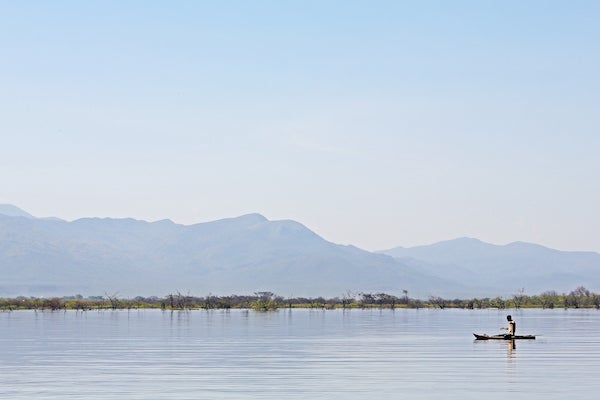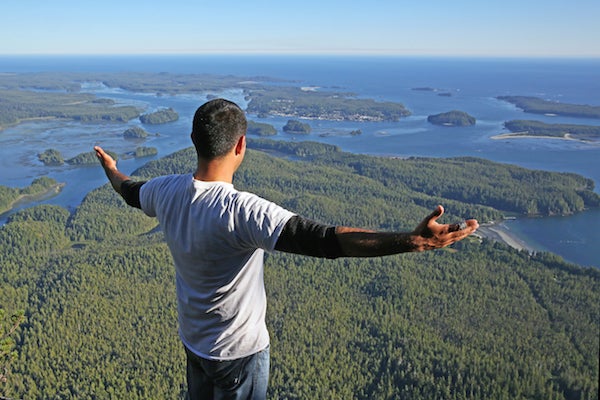This article was published in Scientific American’s former blog network and reflects the views of the author, not necessarily those of Scientific American
“The significant problems we face cannot be solved at the same level of thinking we were at when we created them.”
—Albert Einstein
As the negative consequences of human-induced environmental and social changes are becoming increasingly obvious, there is a growing recognition that “status quo” approaches to resource development and management, rooted in the dominant, largely linear, reductionist worldview, are failing.
On supporting science journalism
If you're enjoying this article, consider supporting our award-winning journalism by subscribing. By purchasing a subscription you are helping to ensure the future of impactful stories about the discoveries and ideas shaping our world today.
Over the last years, several integrative fields of inquiry—such as systems science, resilience science, ecosystem health, ethnoecology, deep ecology Gaia theory, biocultural diversity, among others—have been advancing our understanding of the complex non-linear and multi-scale relationships between people and nature. To better enable us to tackle the multiple challenges facing the planet, our home, many of these fields of inquiry seek to develop respectful and equitable ways of generating knowledge about our relationship with the natural world through braiding traditional knowledge systems and conventional “Western” science.
This shift in thinking is particularly significant because of the contributions that traditional territories of indigenous peoples make toward sustaining biocultural diversity and the carbon stocks. According to the Right and Resources Initiative—an NGO working on land and resource rights of Indigenous peoples and local communities—though the world’s indigenous peoples make up fewer than 4 percent of the world’s population, their traditional territories support about 80 percent of the world’s biological diversity. In addition, even without counting the carbon stored in the soil, indigenous territories contain close to a quarter of the carbon stored above ground in the world’s tropical forests and northern subarctic peatlands and wetlands.
.jpg?w=600)
For centuries, the Altai people have herded their livestock across the plateaus and through the mountain passes of the Altai Mountains in Central Asia. With its outstanding landscapes and rich diversity, the region gained international recognition when the Golden Mountains of Altai were designated a World Heritage Site by UNESCO in 1998. Credit: Gleb Raygorodetsky
Moreover, around the world, the indigenous territories are also the spaces where millennia-old indigenous systems of knowledge generation and practice meet modern technology and scientific insights. One of the more positive outcomes is the generation of new knowledge critical for developing culturally appropriate and relevant climate change adaptation and mitigation responses.
For generations, Indigenous peoples the world over have been monitoring what happens on their traditional territories. It was not just an academic exercise for them. It was vital to their way of life. When does freeze-up begin? Are there fewer animals today than a few years ago? Are there more fires in the forest? Based on these observations, they would adjust their activities on the land—move their camp to a new place or stop hunting in a given area. These observations, embedded in their cultural practices and worldview, have guided their relationships with the living world.
To maintain humankind’s resilience in the face of change, we must draw on the best available knowledge, regardless of its origins—whether it is indigenous knowledge rooted in a millennia of meticulous on-the-land observations of phenology, weather and animal behavior, or contemporary scientific methodologies that rely on satellites to remotely capture large-scale habitat changes, track animal movements or monitor climate.

Ilchamus fisherman on Lake Baringo, Kenya. Credit: Gleb Raygorodetsky
We need to move from our past reductive, dualistic conceptualization towards a multiple evidence based (MEB) approach—an innovative framework adopted by the UN’s Intergovernmental Science-Policy Platform on Biodiversity and Ecosystem Services (IPBES). The MEB approach braids indigenous and scientific knowledge systems together to support and enhance decision-making and ultimately the resilience of interlinked social and ecological systems. The MEB approach preserves the integrity of each knowledge system by recognizing that the interpretation and authentication of knowledge takes place primarily within, rather than across, different knowledge systems.
The process of braiding knowledge systems creates opportunities to develop a deeper understanding of observed events and their consequences. It facilitates joint assessment of information, leading to new insights and innovations, and results in better informed actions.
These opportunities are being realized around the world more and more. In Asia, the Karen villagers of Hin Lad Nai in northern Thailand, in partnership with researchers, have demonstrated that that their millennia-old traditions of swidden agriculture are an invaluable resource for sustaining biodiversity and carbon stocks. In Central America, indigenous peoples practicing their traditional low-carbon livelihoods on ancestral territories are being recognized by the conservation community as the best guardians of the region’s biodiversity. In Australia, traditional fire management by aboriginal peoples, braided with scientific research, has led to the development of climate change mitigation approaches that decrease greenhouse gas (GHG) emissions from savannah fires, while enhancing biodiversity. And in North America, the Environmental Monitoring and Science Division of Alberta Environment and Parks, guided by the Indigenous Wisdom Advisory Panel, is developing new approaches to documenting and interpreting environmental change based on the knowledge co-creation between indigenous and scientific knowledge systems.

Ancestral principle of Hishuk ish tsa’walk—Everything Is One — is the foundation for how Tla-o-qui-aht people steward their traditional territory, designated as Tla-o-qui-hat Tribal Parks, for future generations. Credit: Gleb Raygorodetsky
The MEB approach requires engagement with indigenous peoples that is empathic, equitable, and empowering to support knowledge co-creation. Such process, however, can work only when the rights of indigenous peoples to make decisions about land use are acknowledged and respected. Though this is formally required by the U.N. Declaration on the Rights of Indigenous Peoples (UNDRIP)—which has been endorsed by 148 countries, including the United States and Canada—in reality, indigenous land rights around the world are legally recognized on less than 20 percent of their traditional areas. And this is despite all the benefits that indigenous territories provide to the global community and our planet’s ecological health.
Implementing the multiple evidence based framework to further knowledge co-creation between indigenous and scientific knowledge systems is an important way to help advance the recognition of the leadership role of indigenous peoples in stewarding their lands and waters. This is key if the indigenous territories are to continue to play a fundamental role in conserving biocultural diversity, addressing climate change and sustaining health of our shared home—planet Earth.